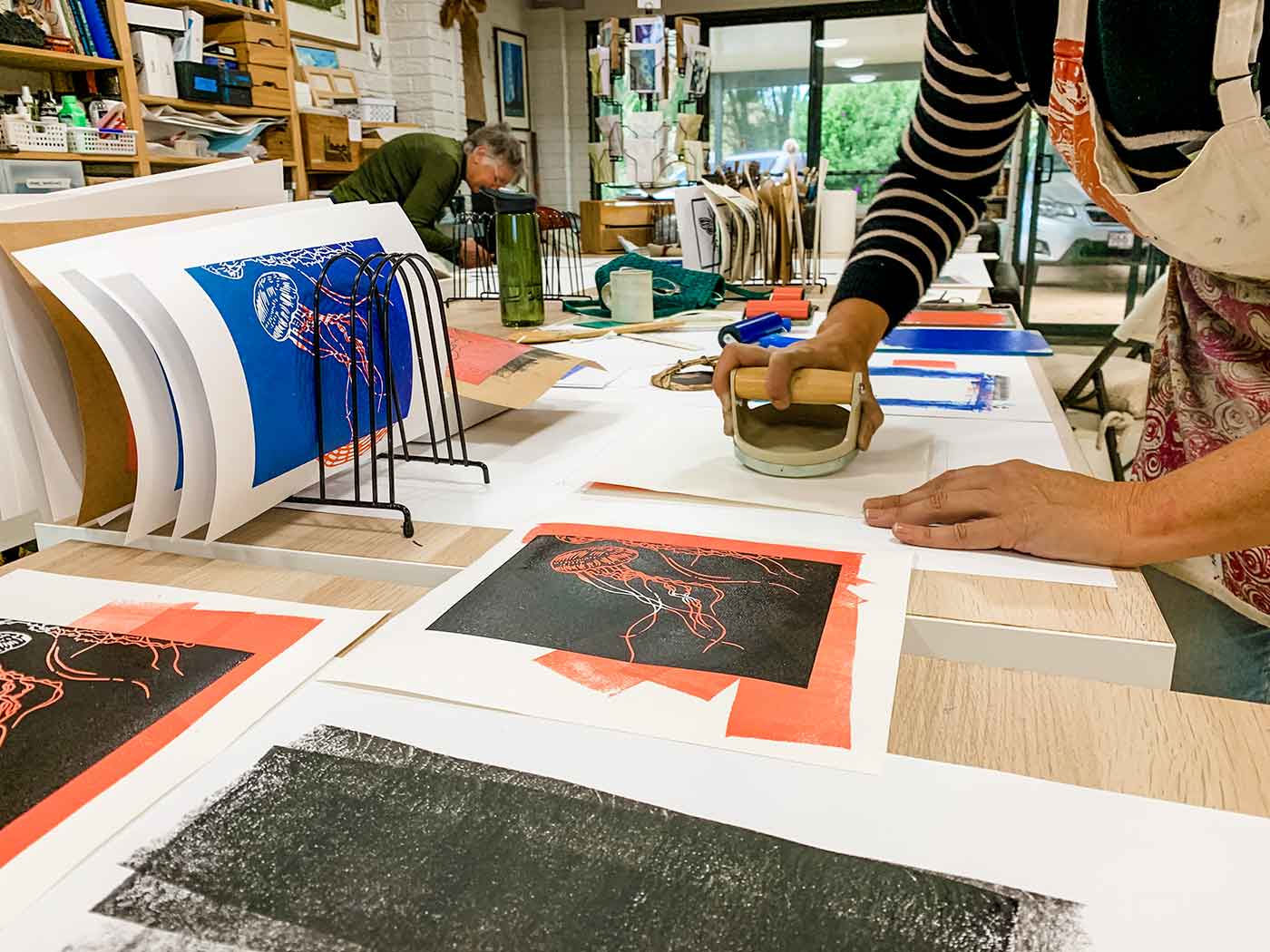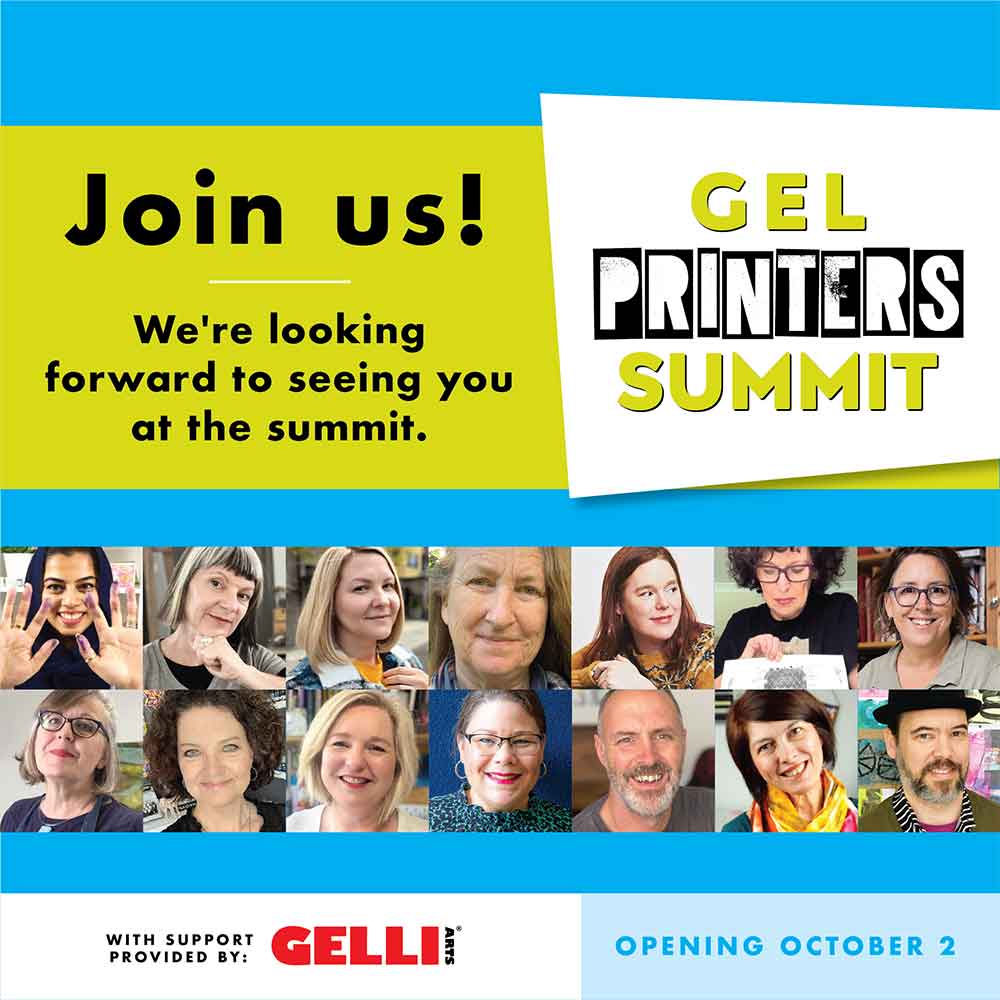Exploring the Possibilities: Gelatin Plate Monoprinting in High School Classrooms
Are you looking for an engaging, accessible and experimental art process to introduce to your high school art classrooms? I’m Kim Herringe, a printmaker passionate about teaching and sharing the craft of printmaking. I’m excited to introduce you to the versatile world of gelatin plate monoprinting. This printmaking art process has been capturing the attention of artists and crafters for many years, and it translates beautifully to the classroom.
I have introduced high school visual arts students to this process as part of the senior (years 11 and 12) visual art students stimulus experience for the past 4 years.
Are you interested in introducing this process to your school cohort?
The Gelatin Plate Monoprinting Process
Gelatin plate monoprinting offers an immersive, hands-on experience that captivates creative minds of all ages. Imagine layering colors on paper using acrylic paint and botanical materials to create unique marks and shapes. The beauty of this process lies in its openness to experimentation, where there are no such thing as a mistake and no right or wrong way to approach the process. Encourage your students to embrace the experience and explore the process freely.
There are many different ways to approach monoprinting with gelatin plates. I love to work with botanicals – leaves and plants collected around my garden and on nature walks. That I what I share when teaching this process.
The act of collecting the botanical materials and printing with them keeps me connected to my natural environment. It reinforces a sense of place and keeps me present in the creative moment. That is what I hope to share with everyone I introduce this process to.
Below are images of some of my own gelatin plate monoprints. You can see more in my monoprinting gallery.
The Impact on Students
I’ve witnessed the positive impact of gelatin plate monoprinting in my adult workshops. Students find inspiration and joy as they dive into the process, discovering their own creative potential. Some students enter the studio with a sense of “I’m not creative”, but the ease and nature of this process has them creating beautiful artworks within a very short time frame. Beyond the workshop, many students continue their explorations, using the prints as artworks in their own right and in various mixed media artworks, collage, digital photography and book making projects.
You can see more monoprints created by students in my adult workshops and a selection of photos of work created by high school students on my School Groups Workshops page.
Benefits for High School Teachers
I understand the importance of introducing new creative processes to students. The materials required for this process as perfectly limited – plants, paint, rollers (aka brayers), paper and gel plates. You will probably already have everything you need in the artroom with the possible exception of the gelatin plates.
When it comes to gel plates the options are to buy commercial Gelli plates or make your own.
Not all schools are able to invest in their own set of commercial Gelli plates, so I have a DIY recipe that allows you to make your own re-usable plates.
Introducing Two Clever Tips for Teachers
Let’s explore two ingenious tips from Wavel Heights State High School high school art teacher Kylie Stapylton. Kylie made 20+ plates for an incursion for her senior Visual Arts students. In doing that she came up with two very clever solutions …
First, she created a fantastic way to set and store the gelatin plates for easy access and extended use. These DIY plates hold many hours of creative potential, and with Kylie’s tip, you’ll maximize their lifespan and create two workable plates from the one recipe.
But what if a plate gets damaged? No problem – they can be melted down and re-poured!
Kylie’s second tip reveals the secret to maintaining the flexibility of the plate when melting down and re-pouring damaged plates.
If the plates are handled with care you will get hours and hours of use from them. Damaged plates can be melted and re-poured (with Kylie’s tip) 2, 3 even 5 times. Check out the DIY recipe, and scroll down that pages for tips and comments, including Kylie’s tips.
Empowering Teachers to Embrace Gelatin Plate Monoprinting
As as artist and educator, I love to share this process and strive to empower and encourage teachers and students to make this process their own.
Gelatin plate monoprinting offers limitless possibilities. Once you’ve mastered the basics, you can easily adapt and modify the process to suit your own teaching style. To support you in that I have compiled a collection of resources and references on my website that I share with you after my student workshop. There are links to more information and resources to help you create an engaging classroom experience.
Gelatin plate monoprinting is an engaging, versatile and simple printmaking process. It lends itself to experimentation and discovery. Whether they use the prints as standalone artworks or integrate them into other artistic endeavors, this process is sure to spark curiosity and joy.
For more details on my school group workshops, click through to my dedicated page here. And don’t forget to check out Kylie Stapylton’s clever tips on the gelatin plate recipe page. Together, we’ll inspire creativity in your high school classrooms!









